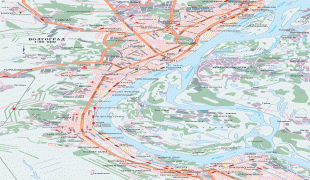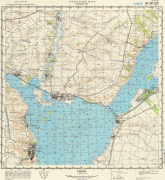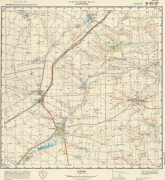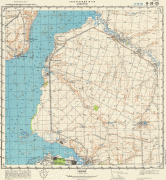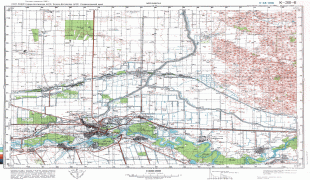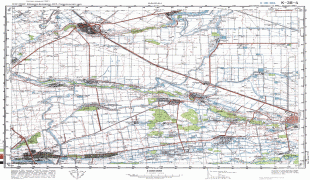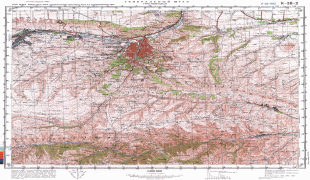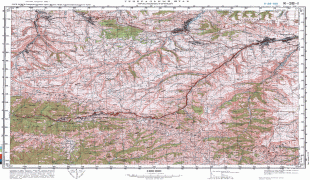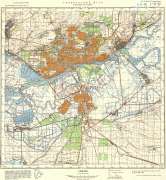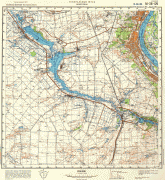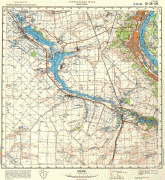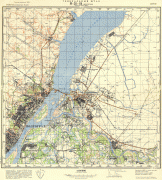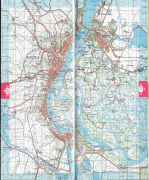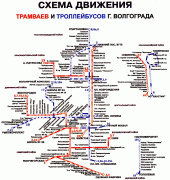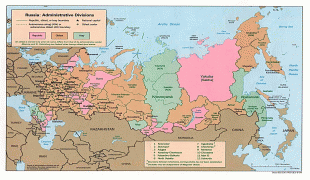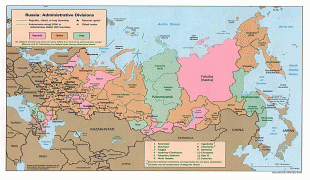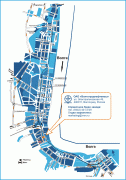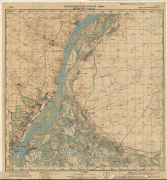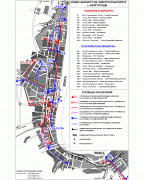Volgograd
 |
 |
The city was founded as the fortress of Tsaritsyn in 1589. By the nineteenth century, Tsaritsyn had become an important river-port and commercial centre, leading to its population to grow rapidly. In November 1917, at the start of the Russian Civil War, Tsaritsyn came under Bolshevik control. It fell briefly to the White Army in mid-1919 but returned to Bolshevik control in January 1920. In 1925, the city was renamed Stalingrad in honor of Joseph Stalin, who then ruled the country. During World War II, Axis forces attacked the city, leading to the Battle of Stalingrad, one of, if not the largest and bloodiest battles in the history of warfare, from which it received the title of Hero City. In 1961, Nikita Khrushchev's administration renamed the city to Volgograd as part of de-Stalinization. After the dissolution of the Soviet Union, the city became the administrative centre of Volgograd Oblast.
Volgograd today is the site of The Motherland Calls, an 85-meter high statue dedicated to the heroes of the Battle of Stalingrad, which is the tallest statue in Europe, as well as the tallest statue of a woman in the world. The city has many tourist attractions, such as museums, sandy beaches, and a self-propelled floating church. Volgograd was one of the host cities of the 2018 FIFA World Cup.
Tsaritsyn has been linked to Turkic Sāriğšin or *Sāriğsın meaning "Yellow tomb" or Sāriğšın "City of the Yellow (Golden) Throne". In the pre-reform Orthography, the name of Tsaritsyn was written as Царицынъ, with the hard sign.
When Vladimir Ilyich Ulyanov (commonly known as Vladimir Lenin) died in 1924, Joseph Stalin took charge as the General Secretary; Tsaritsyn renamed Stalingrad in honour of his role in the defence of the city. Derived from the compound of Stalin (Сталин; his name) and grad. (град; The Slavic name for the settlement)
In the aftermath of Stalin's death, Nikita Khrushchev announced the policy of De-Stalinisation, including the city's name. Changed to Volgograd in 1953, from Volga. (Волга; the name of the river which the city lies on it)
Map - Volgograd
Map
Country - Russia
 |
 |
| Flag of Russia | |
The East Slavs emerged as a recognisable group in Europe between the 3rd and 8th centuries CE. The first East Slavic state, Kievan Rus', arose in the 9th century, and in 988, it adopted Orthodox Christianity from the Byzantine Empire. Rus' ultimately disintegrated, with the Grand Duchy of Moscow growing to become the Tsardom of Russia. By the early 18th century, Russia had vastly expanded through conquest, annexation, and the efforts of Russian explorers, developing into the Russian Empire, which remains the third-largest empire in history. However, with the Russian Revolution in 1917, Russia's monarchic rule was abolished and replaced by the Russian SFSR—the world's first constitutionally socialist state. Following the Russian Civil War, the Russian SFSR established the Soviet Union (with three other Soviet republics), within which it was the largest and principal constituent. At the expense of millions of lives, the Soviet Union underwent rapid industrialization in the 1930s, and later played a decisive role for the Allies of World War II by leading large-scale efforts on the Eastern Front. With the onset of the Cold War, it competed with the United States for global ideological influence; the Soviet era of the 20th century saw some of the most significant Russian technological achievements, including the first human-made satellite and the first human expedition into outer space.
Currency / Language
| ISO | Currency | Symbol | Significant figures |
|---|---|---|---|
| RUB | Russian ruble | ₽ | 2 |
| ISO | Language |
|---|---|
| CE | Chechen language |
| CV | Chuvash language |
| KV | Komi language |
| RU | Russian language |
| TT | Tatar language |






